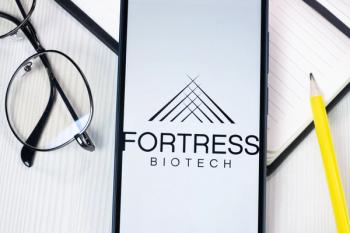
Generic biologics face questions on the horizon
Parmacists could begin selling generic versions of brand-name biologics between 2007 and 2012. So projected speakers at the American Association of Pharmaceutical Sciences' 2005 National Biotechnology Conference, held recently in San Francisco. But the new versions of insulin, human growth hormone, and other products, while less expensive than innovator products, won't be the 70% to 90% less that the industry has come to expect from generics.
Pharmacists could begin selling generic versions of brand-name biologics between 2007 and 2012. So projected speakers at the American Association of Pharmaceutical Sciences' 2005 National Biotechnology Conference, held recently in San Francisco. But the new versions of insulin, human growth hormone, and other products, while less expensive than innovator products, won't be the 70% to 90% less that the industry has come to expect from generics.
That is about as far as industry agreement goes. "There is no regulatory process that would allow the approval of a follow-on biologic product," said Robert Bell, adjunct professor of pharmaceutics at the University of Florida College of Pharmacy and president of consulting service at Drug & Biotechnology Development, LLC.
"There is no agreement on the requisite terminology," he told the conference attendees. "We do not know what bioequivalence means when it comes to biologics, or if equivalence in therapeutic use is even possible. We can't even agree on what to call these new versions."
The name selected may depend in part on how these new biologics pass an initial legal barrier, noted Keith Webber, deputy director of the Office of Biotechnology Products at the FDA's Center for Drug Evaluation & Research. Laws that govern drugs have a specific process for the evaluation and approval of follow-on versions, or generics; laws that govern biologics do not.
Drugs are regulated by the Food, Drug & Cosmetic Act (FDCA). It provides for an Abbreviated New Drug Application (ANDA), which can lead to marketing approval for generic versions of licensed drugs after patent expiration. Drugs are regulated through the Center for Drug Evaluation & Research (CDER).
Biologics are regulated by the Public Health Service Act (PHSA), which offers a Biologic License Application. BLA approvals are handled by the Center for Biologics Evaluation & Research (CBER). But unlike the FDCA, the PHSA has no provisions for an abbreviated approval process, leaving biologics in legal limbo. Without regulatory authority for an abbreviated BLA process, FDA cannot approve follow-on products.
But a regulatory loophole has opened the door partway. Many older biologics, including insulin, human growth hormone, calcitonin, glucagon, and the menotropins, came to market under the NDA process. "Many of these were approved before there were biologics," Webber explained. "Most were originally isolated from natural sources and approved by CDER. The recombinant versions stayed with CDER."
Since they were approved as drugs, follow-on versions can be approved. But no one knows how similar a follow-on biologic product must be in order to be therapeutically equivalent to the original. "In theory, it is possible to produce the same product with two different methods," Webber said.
Demonstrating bioequivalence is relatively straightforward for synthetic drugs, said Mark Rogge, VP of development for ZymoGenetics Corp. The raw materials, processes, and end products are well understood. Testing protocols have been established and validated. The relationships between production processes and end products are clear. But "we cannot use the small molecule definition and model for these biologic products," Rogge said. "Biologic production creates entire families of related bioforms. Even a small change in production can have a major impact on therapeutic effect. We will probably need new definitions of bioequivalence."
Even a simple glycoprotein can appear in nearly 300 different versions, or bioforms, depending on exactly how it was produced, Rogge went on. Each bioform has different physical and biologic characteristics that produce differences in absorption, activity, and toxicity in different tissues. Different bioforms of recombinant calcitonin, he noted, show a fivefold difference in receptor binding activity. Hypocalcemic activity varies up to 12-fold.
Newsletter
Pharmacy practice is always changing. Stay ahead of the curve with the Drug Topics newsletter and get the latest drug information, industry trends, and patient care tips.











































































































































































































